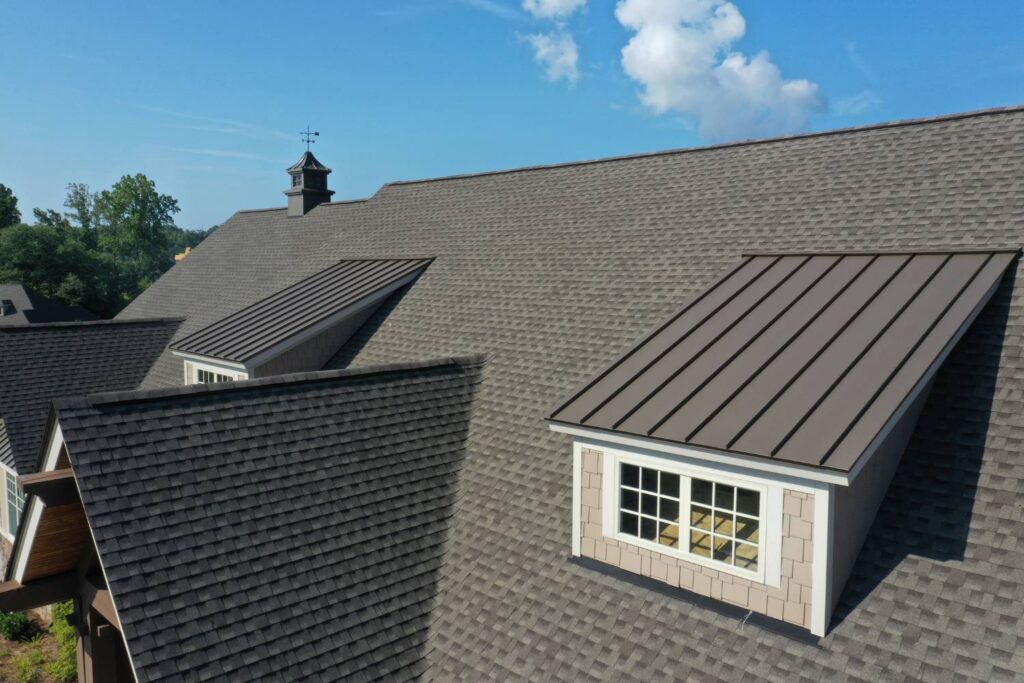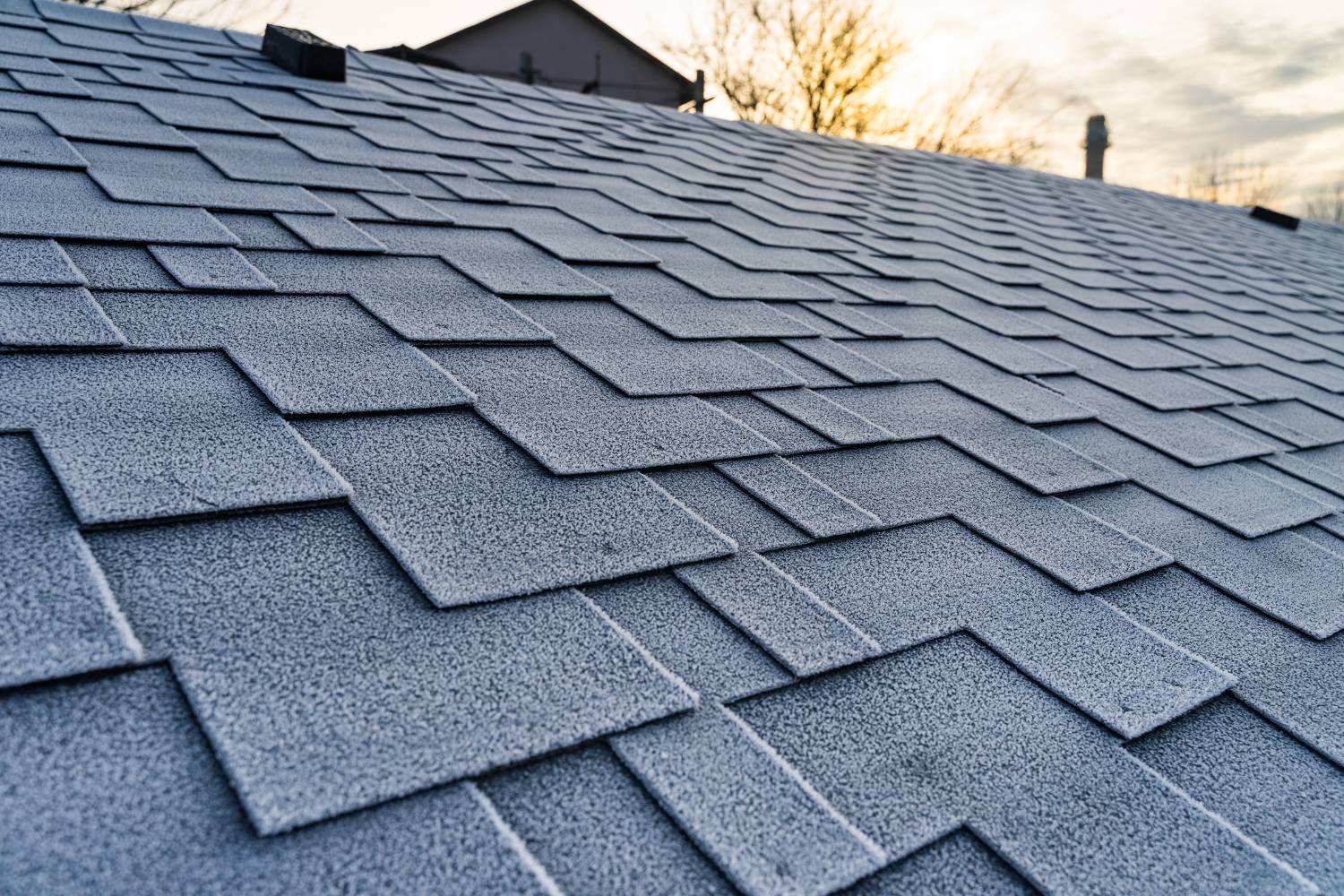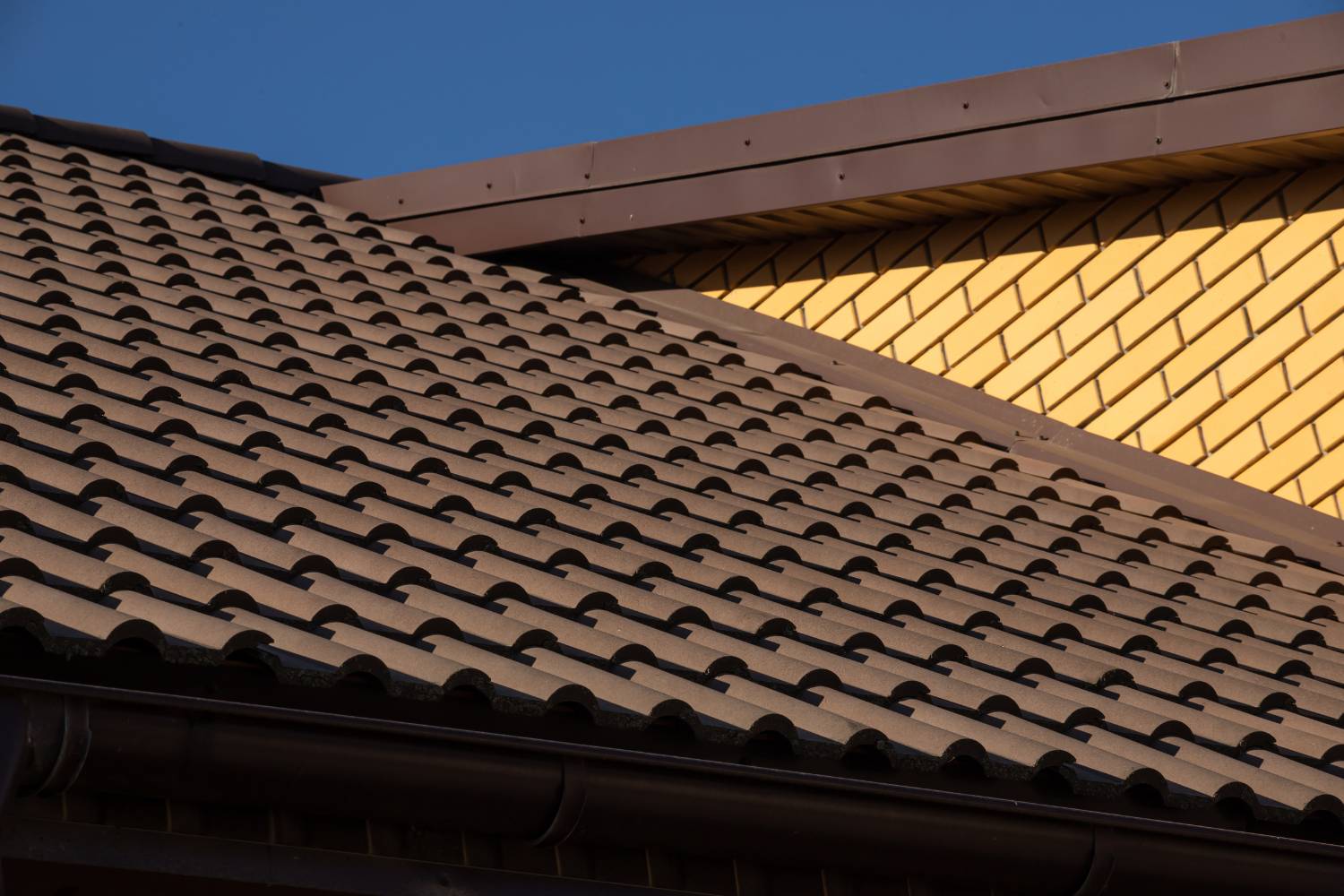Caring for your roof is more than just a chore; it's an essential part of home maintenance that can save you time and money in the long run. Your roof is constantly exposed to the elements, and over time, it can accumulate debris, moss, algae, and other contaminants that can lead to significant damage. Regular roof cleaning is not only about keeping your home looking its best but also about preserving the structural integrity and longevity of your roof.
Read on to discover how regular roof cleaning can prevent costly repairs, improve energy efficiency, and even protect your health and safety. Learn the best methods for cleaning your roof, the ideal frequency for maintenance, and the benefits of professional cleaning services. Let's ensure your roof remains a strong, beautiful, and protective barrier for your home.
How Can You Tell If Your Roof Needs Cleaning?
Maintaining your roof is crucial for extending its lifespan and ensuring it remains in good condition. Regular cleaning can prevent damage and save you from costly repairs. Here are key signs that indicate your roof needs cleaning:
Presence Of Moss And Lichen
- Growth of Moss or Lichen: These organisms can embed themselves deeply into your shingles, leading to structural damage. If you notice moss or a crusty growth on your roof, it's time for a cleaning.
Black Streaks Or Discoloration
- Black Streaks: Often caused by algae, these streaks thrive on moisture retained by shingles. They are not only unsightly but can also lead to water damage.
- General Discoloration: Dirt, grime, and pollutants can cause your roof to look dull and dirty. Regular cleaning helps maintain its aesthetic appeal.
Clogged Gutters
- Overflowing or Blocked Gutters: Clogged gutters can cause water to back up and damage your roof, walls, and foundation. Regular gutter and roof cleaning prevent these issues.
Shifting Or Lifting Shingles
- Shingle Movement: Accumulation of debris like leaves, dirt, and moss can cause shingles to lift, making your roof vulnerable to leaks and water damage. Cleaning removes this debris and prevents shingle displacement.
Visible Dirt And Animal Droppings
- Dirt and Droppings: A roof covered in dirt, animal droppings, or other debris not only looks bad but can also harbour harmful bacteria. Cleaning ensures a healthier environment for your home.
Enhanced Curb Appeal
- Improved Appearance: A clean roof significantly enhances your home's curb appeal, making it more attractive to visitors and potential buyers.
Preventive Maintenance
- Preventing Rot and Leaks: Algae, moss, and lichen can create gaps between shingles, exposing the wood underneath to moisture and leading to rot and leaks. Regular cleaning can prevent these issues.
Energy Efficiency
- Better Energy Efficiency: Algae and other growths can affect your roof's ability to reflect UV rays, increasing your home's energy costs. Cleaning these growths can improve your roof's efficiency.
Professional Cleaning Benefits
- Professional Services: Opting for professional roof cleaning ensures effective and safe removal of contaminants. Techniques like soft washing use eco-friendly methods to clean without damaging shingles.
- Longevity: Regular professional cleaning can significantly extend the lifespan of your roof, saving you money on repairs and replacements.
What Are The Risks Of Not Cleaning Your Roof?
Regular roof maintenance is essential to ensure the longevity and performance of your home. Neglecting this critical task can result in significant issues that impact both the aesthetics and structural integrity of your house. Below, we delve into the risks associated with not cleaning your roof and highlight the importance of regular roof maintenance.
Structural Damage And Reduced Lifespan
One of the primary risks of not cleaning your roof is the potential for structural damage and the reduced lifespan of the roofing materials. Moss and algae can retain moisture, leading to the deterioration of shingles over time.
This persistent moisture can cause the roof to decay, as mould, mildew, and bacteria thrive in these damp environments, compromising the roof's structural integrity. Additionally, unclean roofs are prone to developing pores and cracks, which can lead to water leakage during rainstorms. This not only damages the roof itself but can also result in significant interior damage if leaks go unnoticed.
Increased Energy Costs
Neglecting roof cleaning can also lead to increased energy costs. When algae and dirt accumulate on the roof, they create dark stains that absorb more heat. This increased heat absorption raises the temperature inside the home, causing air conditioning systems to work harder and driving up cooling costs. Moreover, a damaged roof can result in poor insulation, further exacerbating energy inefficiencies and increasing utility bills.
Health Hazards
An unclean roof poses significant health hazards. Mould growth on the roof can present serious health risks to the occupants by entering the home and affecting indoor air quality. Additionally, algae, moss, and lichens on the roof can introduce harmful bacteria into the home environment. These health hazards can lead to respiratory issues and other health problems for those living in the house.
Pest Infestations
Dirty roofs are more susceptible to pest infestations. A rotting roof is particularly attractive to pests such as insects, rodents, and birds. These creatures are drawn to the moisture and decay, leading to potential infestations. Furthermore, bees and birds may build nests on roofs that have an active biosphere of bacteria and fungi, compounding the problem and creating additional maintenance challenges.
Warranty Voidance
Many roof warranties require regular maintenance, including cleaning, as part of their terms. Failing to clean your roof can void these warranties, leaving you responsible for any repair costs that would otherwise be covered. Adhering to the maintenance requirements stipulated in the warranty ensures that you are protected against unexpected repair expenses.
Safety Risks
Attempting to clean the roof yourself can be extremely dangerous. Roofing is inherently risky, and the likelihood of falls and injuries is high, especially for those without proper training and equipment. In contrast, hiring professional roof cleaners ensures that the job is done safely and effectively, minimising the risk of personal injury and ensuring a thorough cleaning process.
How Often Should You Clean Your Roof?
Maintaining a clean roof is essential for the longevity and integrity of your home. The frequency of roof cleaning depends on various factors, such as the type of roofing material, local weather conditions, and the surrounding environment. Below is a comprehensive guide on how often you should clean your roof based on insights from Findlay Roofing, Bill Ragan Roofing, and IBEX Roof.
Why Clean Your Roof?
Cleaning your roof is crucial to prevent the growth of moss, algae, and mould, which can cause significant health problems, attract pests, and damage roofing materials. A clean roof not only enhances the aesthetic value of your home but also prolongs the lifespan of the roofing system by preventing damage and decay.
Furthermore, maintaining a clean roof can help improve energy efficiency as a clean roof reflects sunlight more effectively, reducing cooling costs. Regular cleaning is also important to keep the warranty of your roof active, ensuring you are covered in case of any issues.
How Often Should You Clean Your Roof?
It is generally recommended to have your roof professionally cleaned once a year. This annual cleaning helps in catching any developing issues early and prevents debris from accumulating, which can cause damage.
After major storms, it is important to remove loose debris, such as branches, to prevent potential damage to the roof. While some roofs may only need cleaning every two years, having annual inspections can help determine the necessity and ensure that the roof remains in good condition.
Best Time Of Year To Clean Your Roof
Spring is considered the ideal time for roof cleaning due to moderate temperatures that prevent the quick evaporation of cleaning agents. The months of April or May are particularly optimal. Alternatively, October can also be a good time for cleaning as it is typically dry and allows for the removal of mould that may have developed over the summer months.
Factors Influencing Cleaning Frequency
The frequency of roof cleaning can vary based on several factors. The type of roofing material plays a significant role; asphalt shingle roofs typically need cleaning every one to five years, metal roofs every one to ten years, and tile roofs every six months to five years. Weather conditions also influence cleaning needs, with regions experiencing heavy rainfall or snow requiring more frequent cleaning to prevent mould and mildew growth.
Homes surrounded by trees or located in urban areas may accumulate more debris and pollutants, necessitating more frequent cleaning. Additionally, the age of the roof is an important factor, as older roofs are more susceptible to damage and may require more frequent cleaning and inspections.
What Are The Best Methods For Cleaning Your Roof?
Maintaining the cleanliness of your roof is crucial for its longevity and functionality. Over time, roofs accumulate dirt, moss, algae, and other debris, which can lead to damage and reduce their efficiency. Here are some of the best methods for cleaning your roof, each with its own advantages and disadvantages.
Manual Scraping
Manual scraping involves physically removing moss, algae, and dirt from the roof using specialised tools designed for different roof tile designs. This method is effective for clearing large amounts of debris, ensuring that the roof surface is clean. However, it can be labour-intensive and time-consuming, requiring significant effort to cover the entire roof area thoroughly.
Roof Pressure Washing
Roof pressure washing uses high-powered water jets to clean the roof. This method can quickly restore the appearance of the roof, making it look almost new. However, the high pressure can damage roof tiles by stripping away their protective layers, leading to potential leaks and a reduced lifespan for the tiles. Additionally, pressure washing is not suitable for all roof types, as some materials can be more susceptible to damage.
Soft Washing (Bleach/Hypo)
Soft washing involves spraying a bleach solution to kill moss and algae on the roof. This method is less likely to cause physical damage to the roof compared to pressure washing. However, there is a risk of chemical drift, which can damage plants, garden furniture, and other surfaces around the house. Because of the potential hazards, soft washing is not always ideal for residential roofs, especially if not handled carefully.
Steam Cleaning
Steam cleaning uses high-temperature steam at low pressure to clean the roof. This method is gentle on roof tiles and effectively removes dirt and algae without causing damage. The downside is that steam cleaning is a slower process compared to pressure washing due to the reduced water flow, which means it can take longer to clean the entire roof.
Biocidal Roof Wash
Biocidal roof wash combines manual scraping with a biocidal treatment that kills remaining moss spores and prevents future growth. This method provides long-lasting results, as the biocide continues to work over several months, killing moss and algae and preventing regrowth. It is safe for the roof and can keep it clean for many years. However, it takes time for the full results to become visible as the biocide gradually lifts dirt and contaminants from the roof tiles.
Best Practices And Considerations
Regular cleaning is recommended every three to five years, or more frequently if your home is in a shaded area or surrounded by trees, to maintain the roof's condition and appearance. Safety should always be a priority when cleaning a roof; using cherry pickers or scaffolding can significantly reduce the risk of accidents compared to working from ladders.
For the best results and to avoid damage, consider hiring professional roof cleaning services. Professionals have the expertise and equipment to clean your roof safely and effectively, ensuring optimal results without compromising the integrity of the roof.
Conclusion
Maintaining a clean roof is essential for your home's longevity, efficiency, and appearance. Regular cleaning prevents costly repairs and ensures your roof remains a strong barrier against the elements. By addressing moss, algae, clogged gutters, and discolouration promptly, you can avoid structural damage and increased energy costs.
Professional cleaning services provide safe, effective solutions that enhance your roof's lifespan and curb appeal. Schedule regular inspections and cleanings to protect your investment and keep your home safe and beautiful for years to come.
Frequently Asked Questions
Signs that your roof needs cleaning include the presence of moss, algae, or lichen, which can cause damage over time. Dark streaks or stains, usually caused by airborne algae, are another indicator. Additionally, if you notice an accumulation of debris like leaves and branches, it's a clear sign that your roof needs attention.
Neglecting roof cleaning can lead to several problems. Moss and algae can trap moisture, leading to rot and structural damage. Debris can clog gutters, causing water overflow and potential leaks. Over time, this can compromise the integrity of your roof and lead to costly repairs or even a complete roof replacement.
While some homeowners choose to clean their roofs themselves, it can be risky without the proper equipment and safety measures. Professionals have the experience and tools to clean your roof safely and effectively. Hiring a professional also ensures that the job is done thoroughly, preventing potential damage.
Roof cleaning methods include low-pressure washing, which is gentle on roofing materials and effective at removing moss, algae, and dirt. Chemical treatments are also used to kill and prevent the regrowth of moss and algae. Manual cleaning with brushes or air blowers can remove debris without causing damage.
The frequency of roof cleaning depends on various factors, such as the local climate, the presence of trees around your home, and the type of roofing material. Generally, it's recommended to have your roof inspected and cleaned at least once a year. In areas with high humidity or heavy foliage, more frequent cleanings may be necessary.


